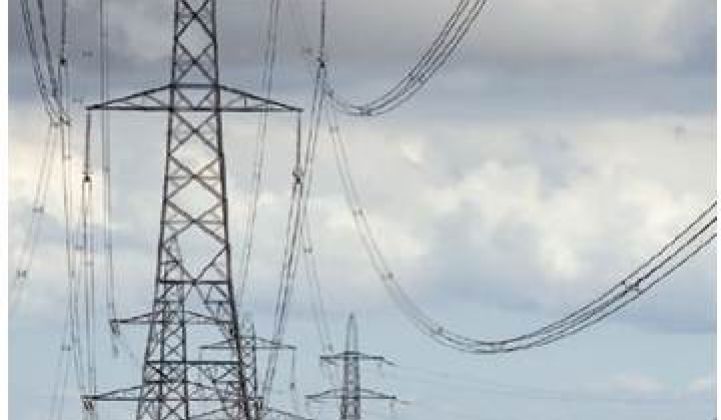This article is the first in a series that will consider methods, costs and other factors associated with integrating renewables into the grid.
***
Transmission system operators are at varying stages of trepidation as renewables’ share of the world’s energy mix grows.
Some, like former California system Vice President Jim Detmer, worry that policy makers are too hastily embracing a commitment to resources whose variability threatens reliability.
But “there are systems right now where you’re getting up to fifteen or twenty percent of energy from wind, mainly in Western Europe, and studies have shown it is possible in the United States,” said Electric Power Research Institute (EPRI) Senior Project Engineer Aidan Tuohy, one of the world’s foremost students of integrating renewables into the grid. “There are a lot of different ways to do it and it really comes down to individual systems,” Tuohy said. “But it is all about flexibility.”
The issue of transmission flexibility is complicated. Landmark studies from the DOE’s National Renewable Energy Laboratory (NREL) on integrating renewables into the eastern U.S. and western U.S. grid systems identified flexibility characteristics: increased balancing area; increased sub-hourly scheduling; increased transmission use; dispatch of generation over wider regions; state-of-the-art wind and solar forecasting; increased dispatchable generation; more operating reserves; new transmission to renewable sources; demand response programs; and required down reserves from wind projects.
These technologies are increasingly available and system operators are beginning to incorporate them.
“The way to alter individual systems to have enough flexibility is going to depend on the individual system,” Tuohy said. But he added, “Transmission is going to be important no matter what system you’re in.”
Denmark is an example of flexibility through transmission. “Denmark is a small area but has good ties to the rest of the Scandinavian system and to Germany,” Tuohy said. “When there’s a lot of wind, it can export it and when the wind dies down it can import hydropower from Norway.”
Portugal is an example of flexibility through dispatchable generation. “Portugal has a lot of hydro that can respond quickly and be controlled by the system operator.”
“If you’re in a place where gas is particularly cheap, that’s an option,” Tuohy said. “Another option is pumped hydro storage, but that requires certain geological formations. Another option would be demand response, if a lot of your demand can respond when it’s needed, like if you’ve got a lot of industry that can delay or turn off processes or a lot of air conditioning load.”
Markets could drive system operators to incorporate more flexibility, Tuohy said. “Markets can do things to require flexibility, incentivizing the different products that are needed whether it be a short-term response or a longer-term response.”
The big question is how much it will cost to integrate renewables.
“The integration cost is made up of multiple factors,” Tuohy said, which is estimated at “anywhere between zero dollars to seven or eight dollars per megawatt-hour for wind.”
The cost of integration is system-specific, according to Tuohy, but it is an aggregate of several factors, including the change in operations from conventional plants because of the variability and uncertainty of wind; the new transmission needed; and the increased capacity needed because “wind isn’t a very good capacity resource; it’s an energy resource.”
The first factor separating zero dollars from eight dollars is, once again, flexibility. “The more flexibility, be it from access to cheap natural gas, hydroelectric reserves or a transmission system that can deliver wind and other resources from a wider region, the lower the cost of integrating renewables.” Tuohy added, “Less flexible systems that have to rely on starting and stopping a lot of units are going to have more expensive integration costs.”
Beyond flexibility, “better use of forecasting reduces the cost quite significantly,” Tuohy noted.
The method used to make the cost calculation is also a reason for the range of estimates.
One difference in methods is what a recent International Energy Agency study called “the capacity adequacy cost,” Tuohy said. “A system planner begins with the question of how much of the system’s peak demand can be met with the available wind and solar resources. Some studies might be for ten percent of energy demand. Others might be for 30 percent or 40 percent of energy demand. As you increase the energy demand, the cost per megawatt-hour also goes up.”
Balancing cost calculations can vary depending on how far out into the future they go.
Forecasting calculations also vary. They are more accurate, Tuohy said, if they include simulations both of the costs associated with the forecast and of actual conditions, but some studies use only one or the other.
The more reserves required to balance the load, the higher the costs of integration, Tuohy said, and greater accuracy is obtained from considering both the variability of renewables and of demand. But some studies consider only the impact of renewables, making the cost of integration seem higher.
The question of cost, Tuohy said, remains “an area of active research.”
“To increase beyond where we are now, you’re going to need to improve operational planning methods and you’re going to have to make sure you’ve got the flexibility needed,” Tuohy said, because “there are issues that have been identified, like frequency response, that as we get to higher and higher penetrations may cause problems.” However, he concluded that “these are not show-stopping issues.”



